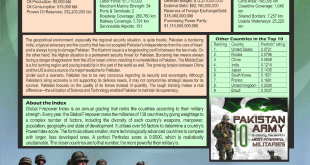“Whoever controls the Indian Ocean will dominate Asia, the destiny of the world will be decided on its waters.” — Alfred Mahan Noted US naval officer and historian
Location: The Indian Ocean is bordered by Asia to the north, Antarctica to the south, Australia to the east and Africa to the west.
Countries: The Indian Ocean is bounded by Iran, Pakistan, India and Bangladesh to the north; the Malay Peninsula, the Sunda Islands of Indonesia, and Australia to the east; Antarctica to the south; and Africa and the Arabian Peninsula to the west. In the southwest, it joins the Atlantic Ocean south of the southern tip of Africa, and to the east and southeast, its waters mingle with those of the Pacific Ocean.
Famous Islands: Mauritius, Seychelles, Reunion, Madagascar, The Comoros, Maldives and Sri Lanka (formerly known as Ceylon)
Etymology: The name originates from the location around the Indian Peninsula.
Size: It is the world’s third largest ocean, after the Pacific and the Atlantic Oceans. It covers 20% of the Earth’s surface.
Area: It boasts an area of approximately 28,360,000 square miles (73,440,000 sq km), including the Persian Gulf, Red Sea, Andaman Sea, Arabian Sea, Bay of Bengal, Flores Sea, Great Australian Bight, Gulf of Aden, Gulf of Oman, Java Sea, Mozambique Channel, Savu Sea, Strait of Malacca, Timor Sea and other tributary water bodies.
Seas: Red Sea and Persian Gulf (North); The Arabian Sea (Northwest); and Andaman Sea (Northeast)
Gulfs and Bays: Aden and Oman (Northwest), Bay of Bengal (Northeast), and the Great Australian Bight (off the southern coast of Australia)
Rivers that flow into it: The Indus, Ganges, Zambezi, Shatt al-Arab, Narmada, Brahmaputra, Jubba and Irrawaddy.
Read More: China’s New Network of Indian Ocean Bases
Volume: It is estimated that the volume of the Indian Ocean is approximately 292,131,000 cubic miles.
Depth: The average depth is 12,990 feet (3,960 metres), and its deepest point, in the Sunda Deep of the Java Trench off the southern coast of the island of Java (Indonesia), is 24,442 feet (7,450 metres).
Width: It stretches for more than 6,200 miles (10,000 km) between the southern tips of Africa and Australia.
Main Currents: (1) North-East Monsoon Current (Warm); (2) Indian Counter Current (Warm); (3) S.W. Monsoon Current (Warm); (4) Indian Equatorial Current (Warm); (5) Mozambique Current (Warm); and (6) West Wind Drift (Cold)
Temperature: On average the Indian Ocean has a minimum temperature of around 22 degrees Celsius/71 degree Fahrenheit. However in the southern regions, nearer to the polar regions, the temperatures drop drastically below 40 degrees latitude south.
Important Waterways: Suez Canal in Egypt and the Strait of Malacca between Malaysia and Indonesia
Seaports:
The Port of Singapore is the busiest port in the Indian Ocean, located in Strait of Malacca where it meets the Pacific.
Mumbai Port (Mumbai, India – also known as “The Gateway of India”)
Mormugao Port and Panambur (New Mangalore Port)
Kochi Port (also known as ‘The Queen of the Arabian Sea’)
Chittagong (Bangladesh),
Colombo, Hambantota and Galle (Sri Lanka)
Kolkata, Visakhapatnam, Paradip Port, Chennai, Ennore, Tuticorin and Nagapattinam (India)
Karachi and Gwadar (Pakistan)
Port of Aden (Yemen)
Mombasa (Kenya),
Dar es Salaam, Zanzibar (Tanzania),
Durban, East London, Richard’s Bay (South Africa)
Beira (Mozambique)
Port Louis (Mauritius).
Muscat (Oman)
Yangon (Burma)
Jakarta, Medan (Indonesia)
Perth (Australia)
Dubai (UAE)
Pakistan’s Interests
Pakistan shares a 990km long coastline located at the heart of the Arabian Sea and is among the major littoral states of Indian Ocean region. It has a bulk of marine economic resources in its Exclusive Economic Zone (EEZ). Its western coast adjacent to the Gulf makes it strategically substantial by providing shortest sea route to the landlocked Central Asian Republics (CARs), Afghanistan and western China. Due to China’s One Belt, One Road (OBOR) initiative and China-Pakistan Economic Corridor (CPEC), the Indian Ocean assumes even greater significance for Pakistan. In order to secure its economic interests in the Indian Ocean, Pakistan conducted successful test of indigenously-developed submarine launched cruise missile (SLCM) ‘Babur’ having a range of 450km on March 29th, 2018.
Pakistan’s test of SLCM was nothing but to secure its economic interests in the Indian Ocean region. Securing its economic interests in the IOR is important for Pakistan because almost 97 percent of Pakistan’s trade is carried out through the port of Karachi, Muhammad Bin Qasim, Gwadar, Pasni, Jiwani, Gadani and Ormara. Long stretched coastline and significant harbours provide Pakistan with a location that is ideal for sea-borne trade and commercial activities carried out mostly in foreign ships. Pakistan’s role in international navigation, the EEZ and Gwadar port are highly significant for the country’s economic development.
 Jahangir's World Times First Comprehensive Magazine for students/teachers of competitive exams and general readers as well.
Jahangir's World Times First Comprehensive Magazine for students/teachers of competitive exams and general readers as well.



